When the field shifts, when it fluctuates, when it goes into flux and begins to become unstable anything can happen. And what normally happens is that all hell breaks loose.
Magnetic polar shifts have occurred many times in Earth's history. It's happening again now to every planet in the solar system including Earth.
The magnetic field drives weather to a significant degree and when that field starts migrating superstorms start erupting.
The superstorms have arrived
The first evidence we have that the dangerous superstorm cycle has started is the devastating series of storms that pounded the UK during late 2010.
On the heels of the lashing the British Isles sustained, monster storms began to pummel North America. The latest superstorm—as of this writing—is a monster over the U.S. that stretched across 2,000 miles affecting more than 150 million people.
Yet even as that storm wreaked havoc across the Western, Southern, Midwestern and Northeastern states, another superstorm broke out in the Pacific and closed in on Australia.
The southern continent had already dealt with the disaster of historic superstorm flooding from rains that dropped as much as several feet in a matter of hours. Tens of thousands of homes were damaged or destroyed. After the deluge bull sharks were spotted swimming between houses in what was once the quiet town of Goodna.
Shocked authorities now numbly concede that some of the water may never dissipate and have wearily resigned themselves to the possibility that region will now contain a small inland sea.
But then only a handful of weeks later another superstorm—the mega-monster cyclone Yasi—struck northeastern Australia. The damage it left in its wake is being called by rescue workers a war zone.
The incredible superstorm packed winds near 190mph. Although labeled as a category-5 cyclone, it was theoretically a category-6. The reason for that is storms with winds of 155mph are considered category-5, yet Yasi was almost 22 percent stronger than that.
A cat's cradle
Yet Yasi may only be a foretaste of future superstorms. Some climate researchers, monitoring the rapidly shifting magnetic field, are predicting superstorms in the future with winds as high as 300 to 400mph.
Such storms would totally destroy anything they came into contact with on land.
The possibility more storms like Yasi or worse will wreak havoc on our civilization and resources is found in the complicated electromagnetic relationship between the sun and Earth. The synergistic tug-of-war has been compared by some to an intricately constructed cat's cradle. And it's in a constant state of flux.
The sun's dynamic, ever-changing electric magnetosphere interfaces with the Earth's own magnetic field affecting, to a degree, the Earth's rotation, precessional wobble, dynamics of the planet's core, its ocean currents and—above all else—the weather.
Cracks in Earth's Magnetic Shield
The Earth's northern magnetic pole was moving towards Russia at a rate of about five miles annually. That progression to the East had been happening for decades.
Suddenly, in the past decade the rate sped up. Now the magnetic pole is shifting East at a rate of 40 miles annually, an increase of 800 percent. And it continues to accelerate.
Recently, as the magnetic field fluctuates, NASA has discovered "cracks" in it. This is worrisome as it significantly affects the ionosphere, troposphere wind patterns, and atmospheric moisture. All three things have an effect on the weather.
Worse, what shields the planet from cancer-causing radiation is the magnetic field. It acts as a shield deflecting harmful ultra-violet, X-rays and other life-threatening radiation from bathing the surface of the Earth. With the field weakening and cracks emerging, the death rate from cancer could skyrocket and mutations of DNA can become rampant.
Another federal agency, NOAA, issued a report caused a flurry of panic when they predicted that mammoth superstorms in the future could wipe out most of California. The NOAA scientists said it's a plausible scenario and would be driven by an "atmospheric river" moving water at the same rate as 50 Mississippi rivers flowing into the Gulf of Mexico.
Magnetic field may dip, flip and disappear
The Economist wrote a detailed article about the magnetic field and what's happening to it. In the article they noted:
"There is, however, a growing body of evidence that the Earth's magnetic field is about to disappear, at least for a while. The geological record shows that it flips from time to time, with the south pole becoming the north, and vice versa. On average, such reversals take place every 500,000 years, but there is no discernible pattern. Flips have happened as close together as 50,000 years, though the last one was 780,000 years ago. But, as discussed at the Greenland Space Science Symposium, held in Kangerlussuaq this week, the signs are that another flip is coming soon."
Discussing the magnetic polar shift and the impact on weather, the scholarly paper "Weather and the Earth's magnetic field" was published in the journal Nature. Scientists too are very concerned about the increasing danger of superstorms and the impact on humanity.
Superstorms will not only damage agriculture across the planet leading to famines and mass starvation, they will also change coastlines, destroy cities and create tens of millions of homeless.
Superstorms can also cause certain societies, cultures or whole countries to collapse. Others may go to war with each other.
A Danish study published in the scientific journal Geology, found strong correlation between climate change, weather patterns and the magnetic field.
"The earth's climate has been significantly affected by the planet's magnetic field, according to a Danish study published Monday that could challenge the notion that human emissions are responsible for global warming.
"'Our results show a strong correlation between the strength of the earth's magnetic field and the amount of precipitation in the tropics,' one of the two Danish geophysicists behind the study, Mads Faurschou Knudsen of the geology department at Aarhus University in western Denmark, told the Videnskab journal.
"He and his colleague Peter Riisager, of the Geological Survey of Denmark and Greenland (GEUS), compared a reconstruction of the prehistoric magnetic field 5,000 years ago based on data drawn from stalagmites and stalactites found in China and Oman."
In the scientific paper "Midday magnetopause shifts earthward of geosynchronous orbit during geomagnetic superstorms with Dst = -300 nT" the magnetic intensity of solar storms impacting Earth can intensify the effects of the polar shift and also speed up the frequency of the emerging superstorms.
Possible magnetic pole reversal may also be initiating new Ice Age
According to some geologists and scientists, we have left the last interglacial period behind us. Those periods are lengths of time—about 11,500 years—between major Ice Ages.
One of the most stunning signs of the approaching Ice Age is what's happened to the Chandler wobble.
The Earth's wobble has stopped.
As explained in the geology and space science websiteearthchangesmedia.com, "The Chandler wobble was first discovered back in 1891 by Seth Carlo Chandler an American astronomer. The effect causes the Earth's poles to move in an irregular circle of 3 to 15 meters in diameter in an oscillation. The Earth's Wobble has a 7-year cycle which produces two extremes, a small spiraling wobble circle and a large spiraling wobble circle, about 3.5 years apart.
"The Earth was in October 2005 moving into the small spiraling circle (the MIN phase of the wobble), which should have slowly unfolded during 2006 and the first few months of 2007. (Each spiraling circle takes about 14 months). But suddenly at the beginning of November 2005, the track of the location of the spin axis veered at a very sharp right angle to its circling motion.
"The track of the spin axis began to slow down and by about January 8, 2006, it ceased nearly all relative motion on the x and y coordinates which are used to define the daily changing location of the spin axis."
And the Earth stopped wobbling—exactly as predicted as another strong sign of an imminent Ice Age.
So, the start of a new Ice Age is marked by a magnetic pole reversal, increased volcanic activity, larger and more frequent earthquakes, tsunamis, colder winters, superstorms and the halting of the Chandler wobble.
Unfortunately, all of those conditions are being met.
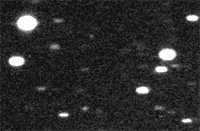
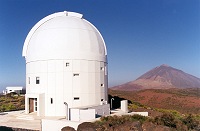
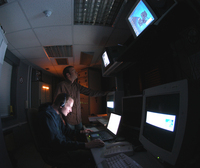
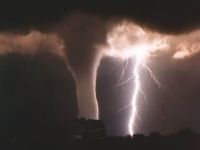 Frightening new evidence begins to surface about the Earth's wobble, its effect on the climate and the beginning of a new Ice Age, heralded by a series of monster storms such as those unleashed on the UK in late 2010, the USA before Christmas and now again at the beginning of February and Eastern Australia, first with its worst flooding ever and then with a Category 5 hurricane.
Frightening new evidence begins to surface about the Earth's wobble, its effect on the climate and the beginning of a new Ice Age, heralded by a series of monster storms such as those unleashed on the UK in late 2010, the USA before Christmas and now again at the beginning of February and Eastern Australia, first with its worst flooding ever and then with a Category 5 hurricane.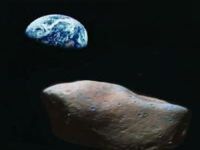 In his work "Astronomers now predict killer asteroid will hit Earth in 2036", US based researcher and writer Terrence Aym* quotes Russian Professor Leonid Sokolov, of St. Petersburg State University, who stated in a TV interview recently that "It is likely a collision with Earth may occur on April 13, 2036" with the asteroid Apophis.
In his work "Astronomers now predict killer asteroid will hit Earth in 2036", US based researcher and writer Terrence Aym* quotes Russian Professor Leonid Sokolov, of St. Petersburg State University, who stated in a TV interview recently that "It is likely a collision with Earth may occur on April 13, 2036" with the asteroid Apophis.



